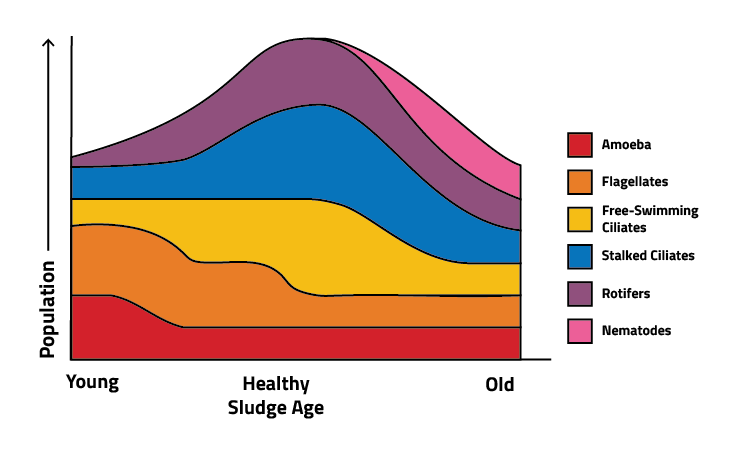Activated Sludge and F:M Ratio Calculator
Enhance Your Wastewater Treatment with Our Activated Sludge and F:M Ratio Calculator
Managing a wastewater system requires a deep understanding of the intricate balance between food and microorganism ratios (F:M). Utilize our calculator to maintain a favorable F:M ratio, paving the way for a successful bacterial population and mitigating potential issues such as the growth of filamentous bacteria types like 1851 and 0041/0675.
The activate sludge calculator below can help to determine the F:M ratio of your system, and to determine the impact of adjusting variables in the equation.
Food to Microorganism (F/M)
Activated Sludge (Wastewater) Calculator
Understanding Low F:M Conditions
In many wastewater treatment facilities, particularly smaller municipal plants, a low F:M ratio is a chronic issue, often resulting in chronic underloading. This scenario sets the stage for bacterial starvation, leading to increased sludge age and cell death. The low F:M conditions also become a breeding ground for Nocardioforms, which can cause foaming and compete with floc-forming bacteria for essential nutrients, thereby altering the system’s F:M balance.
The Intricacies of Bacteria Behavior in Low F:M Conditions
When bacteria run low on food, they produce extracellular polymeric substances (EPS), compounds that store and concentrate Biochemical Oxygen Demand (BOD) near the floc-forming bacteria. Initially, this is a beneficial process facilitating clear effluent through flocculation. However, if sustained for a long period, bacteria begin utilizing EPS as food, causing floc disintegration and cloudy supernatant.
Low F:M conditions favor the growth of Nocardioforms, which are particularly adept at removing BOD. Their thriving conditions can sometimes induce low F:M situations, even in systems with a healthy F:M ratio, by competing for food with floc formers. Controlling these bacteria can often alleviate symptoms associated with a low F:M ratio.
Strategies to Address Low F:M Challenges
Addressing the low F:M conditions requires a multi-faceted approach:
- Adjusting MLSS Concentration: One of the primary controllable variables affecting the F:M ratio is the MLSS concentration. Experimenting with its levels can bring notable improvements to your system.
- Effective Sludge Management: Increase sludge removal rates where possible to prevent chronic underloading. Introducing food supplements during low loading periods can also help maintain an optimal F:M ratio.
- Seasonal Adjustments: Bear in mind the seasonal variations that affect bacterial activity. During warmer months, increased bacterial activity can potentially lead to underloading, requiring adjustments to prevent imbalances.

SmartBOD: A Trusted Ally in Maintaining a Healthy F:M Ratio
While many systems resort to introducing feeds like dog food to counter low F:M conditions, this method often leads to high grease levels and reduced aeration basin volume. SmartBOD presents a superior alternative with higher BOD and nutrient concentration, without the adverse effects commonly seen with traditional feeds. Its unique formulation promotes better floc formation, ensuring a clearer effluent.;
Unlock the Full Potential of Your Wastewater System with Aquafix
With science-backed solutions at your disposal, fostering a healthier, more efficient wastewater treatment process becomes a tangible reality. SmartBOD offers an effective remedy to low F:M conditions, enhancing the overall system’s performance.
